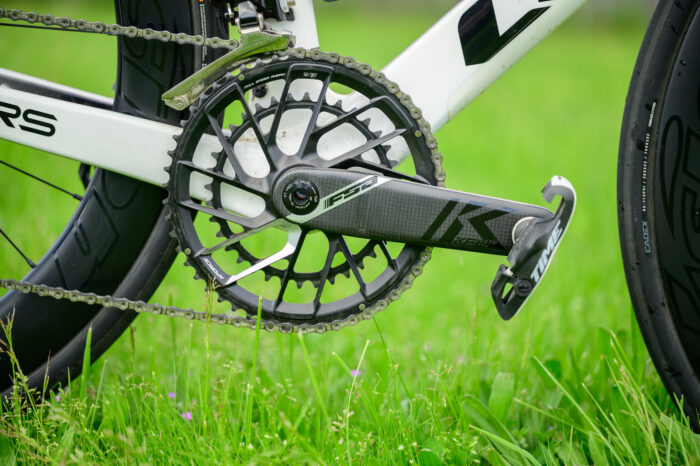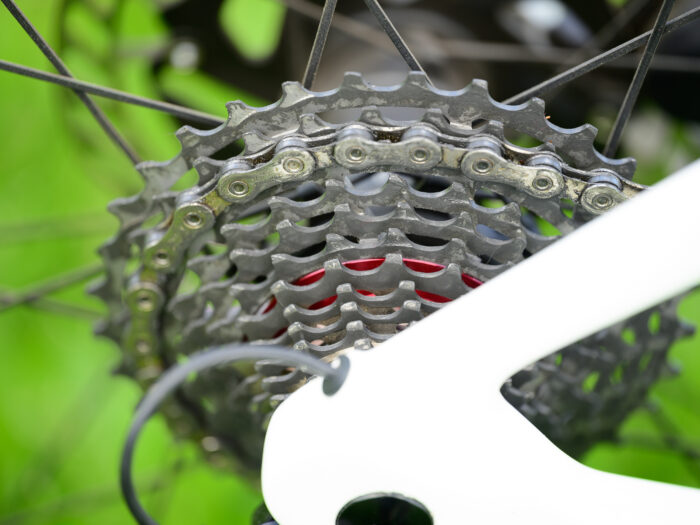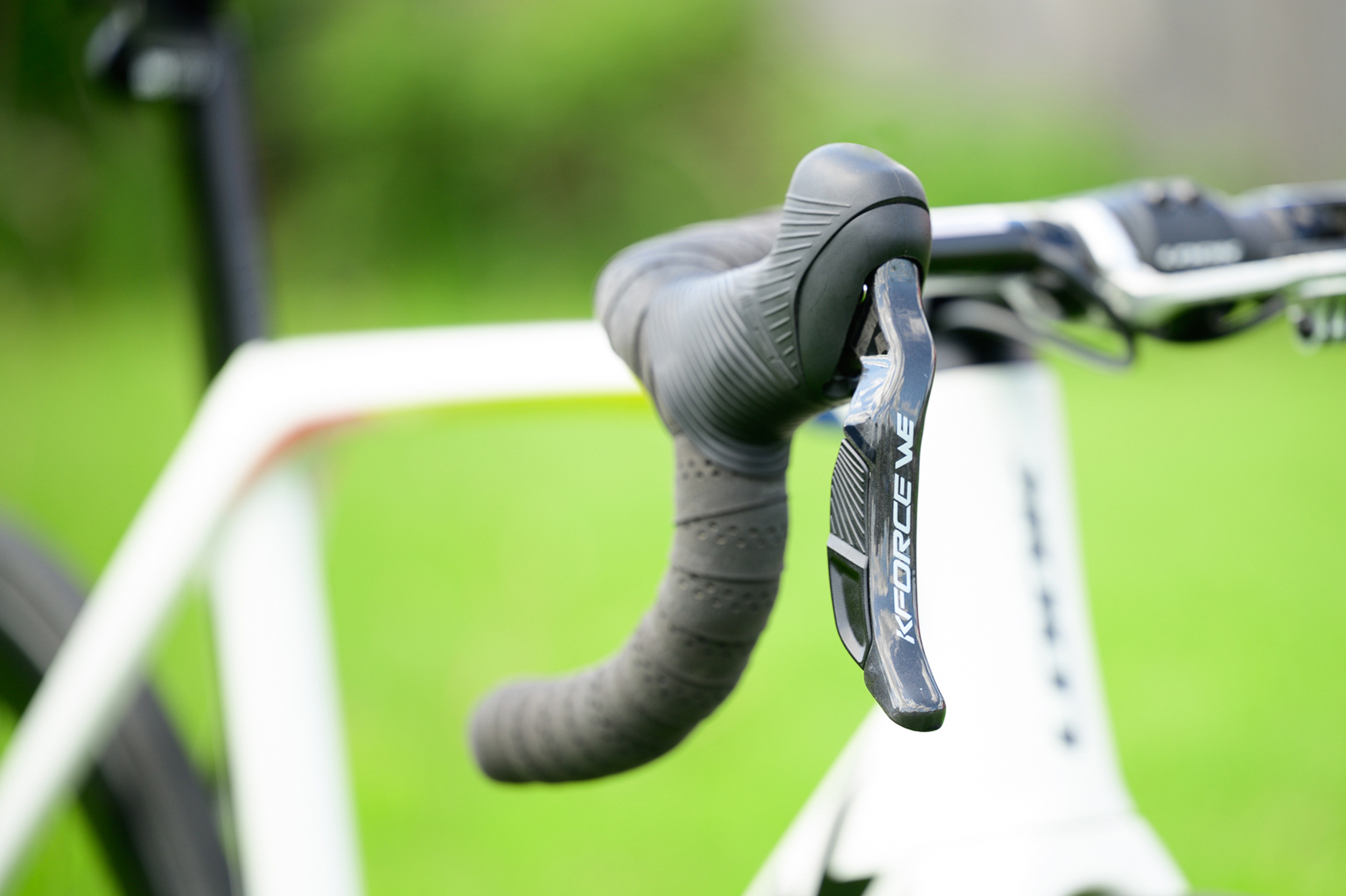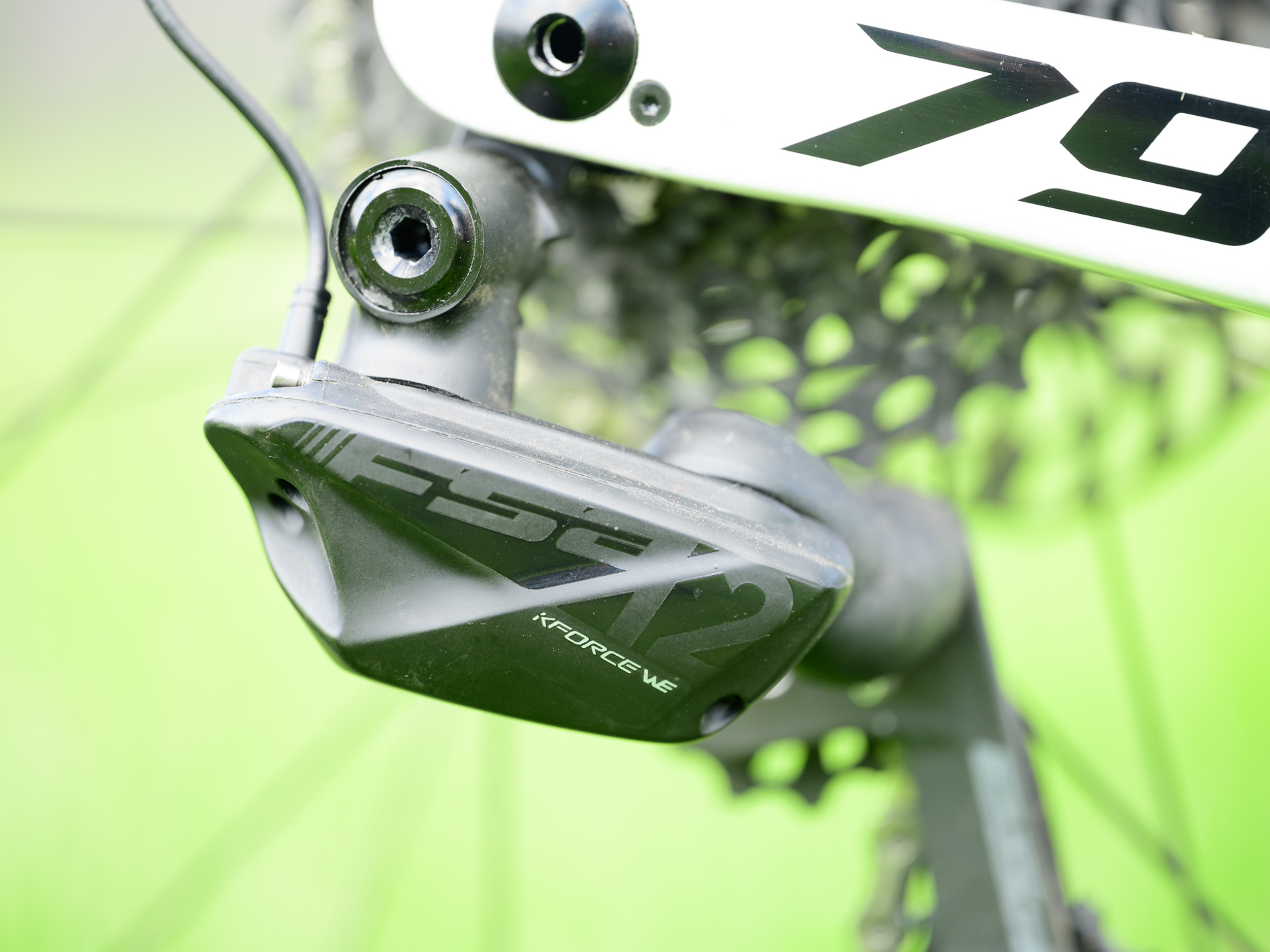The FSA K-Force WE 12s represents something much bigger than a single company making a groupset. For bicycle frames, a small company can form and start building a few. If people love it, there’s a clear path to scaling the business and building more copies for more people. A groupset is entirely different.
Building a groupset requires a scale of engineering and production far beyond anything else in the cycling ecosystem. Brakes, derailleurs, gearing choices, and control feel; the punch list seems endless, and it all requires a huge lift just to get started. Electronic shifting is an even bigger lift with exponentially more needs.
The amount of capital and logistics required is staggering, and as a result, there have only been three main players in the entirety of modern cycling. The FSA K-Force WE 12s groupset represents a sea change.
FSA is one of the few companies with the size and logistics expertise to pull off a truly credible new component group. The big question is, with this second-generation FSA K-Force WE 12s, has the brand actually done it?
In short: After spending time with a pre-production FSA K-Force WE 12s groupset, we can say it worked. Despite being a second-generation product, there were a few details to work out on the software side. But it’s the lightest electronic disc groupset on the market, and the ergonomics were fantastic.
- Price: $3,800
- Speeds: 2×12
- Chainrings: 54/40T, 50/34T, 46/30T
- Cassettes: 11-25T, 11-28T, 11-32T
- Brakes: Disc only 140mm or 160mm rotor options
- Function: Semi-wireless, electronic only
- Weight: 2,423 g weighed with a 52/36 crank, 11-32T cassette, and dual 160mm rotors
Pros
- Easily adjustable lever reach
- Ergonomics
- Semi-wireless design
- Lightweight
- Shimano compatibility
Cons
- Shifting noise under power
- Doesn’t report current gear to a bike computer
- 32-tooth max rear derailleur
History of FSA K-Force Road Groupsets
The FSA K-Force We 12s is the second generation of the groupset from FSA. The previous generation never gained much market share, though. Instead of enjoying time in the market with the distinction of being the first semi-wireless groupset, the emergence of 12-speed drivetrains quickly upstaged it. First, Campagnolo arrived on the scene with 12-speed shifting then SRAM brought not only 12-speed but a fully wireless design.
The competition wasn’t the only issue for the first generation, either. Anyone willing to look past the number of gears still had to contend with reports of the charging cable coming out. This required a fix before being able to shift.
The system also used the front derailleur as the master of the system. This was not an issue on its own, but it limited what FSA could do as 1x drivetrains gained popularity. Challenges with distribution ended up being the biggest issue, as the system was virtually impossible to buy over the years.
Thankfully, we can forget the past and look toward the future with the latest FSA K-Force We 12s. FSA took what the engineers learned the first time around and brought a new, 12-speed groupset to market. While FSA doesn’t suddenly lose the distinction of being the first semi-wireless groupset, the new generation isn’t trying to be the first at anything.
Test Bike Build

I knew from the beginning that I would be building up a Look 795 Blade RS frameset with the FSA K-Force We 12s groupset. The Look aero frame, with its focus on comfort, fit my desire to ride long very distances for testing.
I also wanted to get the widest range of gearing possible. That started with the 11-32 cassette; however, the only crankset available at the time was 52-36. I paired that with 160mm rotors both front and rear for the best stopping power, even on long descents.
Before anything got put together, the first stop was the scale. This is where it became obvious that while FSA might have lost the distinction as the only semi-wireless option, the brand still stands out.
The full groupset comes in at 2,423 g as weighed on my scale. That compares to 2,505 g for Campagnolo Record EPS 12-speed, 2,506 g for Dura-Ace R9200, and 2,518 g for SRAM RED AXS without a power meter.
New Generation FSA K-Force WE 12s Features
The FSA K-Force WE 12s starts at the front with a gorgeous set of carbon fiber levers. The levers communicate with the rest of the system using ANT+ and use a coin cell battery for power.
Like Shimano, the left lever handles the front derailleur, and the right handle the rear. Instead of having one lever in front of the other though, FSA uses a rocker arrangement with one button above and one below.

Again like Shimano, the battery sits inside the frame. It’s a 1,100 mAh battery (versus 500 mAh for Shimano), and the wiring travels through the frame to the front derailleur. This is where you will find the power and adjust buttons.
The rear derailleur acts as the master, which means it’s possible to run the group as a 1x system. When it’s time to charge, you’ll need to pull the cable from the rear derailleur where it exits the frame and plug it directly into the charger. Unlike Campagnolo, the cable joins are small enough to fit Shimano-compatible frames, and there are no junction boxes.
You’ll notice there are a lot of similarities with Shimano, and that continues with the chain, cassettes, and brakes. Starting with the brakes, there is only an option of hydraulic disc brakes, and the calipers use mineral oil.
For the cassette, you have options of 11-25T, 11-28T, and 11-32T. And as with the chain, you have the option of running Shimano pieces if you’d prefer. Just keep in mind that the max tooth count in the rear is 32.

The last major piece of the system is the gorgeous FSA K-Force Team Edition crankset. The arms have a matte finish with a 3k weave outer and a hollow center, plus an aluminum inlay reminiscent of SRAM Red on one edge.
The real star of the show, though, is the aluminum chainrings that come out of the CNC machine as a single piece. It’s reminiscent of Cannondale cranks, though there’s no special bearing puller needed to remove it. Gearing options include 54/40T, 50/34T, and 46/30T.
FSA K-Force WE 12s Groupset Ride Impressions
I wanted to arrange a test that would make a statement. I wanted to do something epic on a groupset that had a bad reputation and maybe prove that FSA was a serious contender in the groupset market. Of course, that would leave the possibility of failing in a public way and having to tell readers that there was an issue. Fortunately, that didn’t happen, and I can tell you a success story.
What I ended up planning was a ride from Los Angeles to Monterey over the course of 2 days. That would have been roughly 180 miles a day, but as it turned out, Alaska Airlines required a change of plans. The highlight of the story is that when I landed in Los Angeles, the Look frame had a broken seat stay.
Montenegro Manufacturing managed to do a 24-hour turnaround on the carbon repair. I drove the bike halfway to Santa Maria, where I dropped off the car before riding the remaining 185 miles to Monterey. In the end, the ride was less than I’d hoped. But I still had 14 on-bike hours to contemplate the FSA groupset, plus time before and after while enjoying the roads around my house.
The Ergonomics Leader

Throughout the time I spent with the FSA groupset, ergonomics was always the standout feature. From the very first time I put my hands on the controls, I loved them. The levers have a beautiful kink in them where the carbon juts out away from the centerline of the bike. It looks amazing, but it also put my hands right where I wanted them.
What the kink also did was highlight the fantastic shifting buttons. While most people would probably describe Shimano Di2 buttons as having an up and a down, they actually don’t. Shimano arranges one button in front of the other. With time, your brain associates that with up and down.

FSA actually has one button above the other, and they were a joy to use. The combination of the rocker and the opposing textures made it incredibly easy to push the button I wanted without thinking.
The levers were also incredible when it was time to get on the brakes. Modern hydraulic brake systems are so good that it’s difficult to rave in the same way as I am willing to rave about ergonomics. There was plenty of modulation, but pointing out the differences between SRAM and Shimano is difficult. The levers were comfortable, and the pads never dragged, even when the rotors were hot.
Shifting

When it comes to the actual shifting, this is the section where I have to mention that I was testing a pre-production system. When I pressed the shift buttons, it worked every single time. That should be a given, but there are some reviews of the first generation that said it wasn’t.
This time, the shifts were fast and dependable. It was not quite as smooth as SRAM or Shimano. The feel of the shifts was a little reminiscent of Campagnolo, but sometimes a bit of noise was present when shifting at the bottom of the cassette.

What it felt like is that it could have used one more firmware update to get everything dialed in. As I’m writing this, there’s no app available for the 12-speed groupset. It was possible to do micro-adjusting via a combination of buttons on the levers and front derailleur, but I thought it needed a little more than that.
We’ll have to see where that goes once things settle a little more, but the track record of improvements through the lifespan of the previous generation groupset is a good sign.
FSA K-Force We 12s Groupset: Conclusions

Every time I review a product, I want nothing more than to tell you that it’s the best I’ve ever touched. The FSA K-Force We 12s was a little more nuanced than that. I loved the ergonomics.
The hoods are small, and the levers are as beautiful to look at as they were to hold. The buttons might be the best out there, and the crank is both gorgeous and ultra-stiff. FSA can also claim the title of the lightest electronic disc brake groupset.
Unfortunately, all that came with shifting that was a bit less smooth than the best out there. I think there’s a good chance this improves before the group actually goes on sale, but it was a factor during this review.
More important than the details, though, is that this is a positive sign for the bicycle component market. If it was ever easy to undertake the manufacture and distribution of a full groupset, it’s not now.
The FSA K-Force WE 12s is a $3,800 premium groupset ready to take on the best of what’s available. It’s a second-generation product, showing long-term commitment, and should you ever need consumables in a pinch, you can grab Shimano pieces.
The bottom line: The groupset marketplace just got a little more complicated, and that’s a good thing.
Editor’s note: FSA officially launched the K-Force WE 12s groupset, but the only way to purchase the groupset at the time of writing was to call the brand at 425-488-8653.









